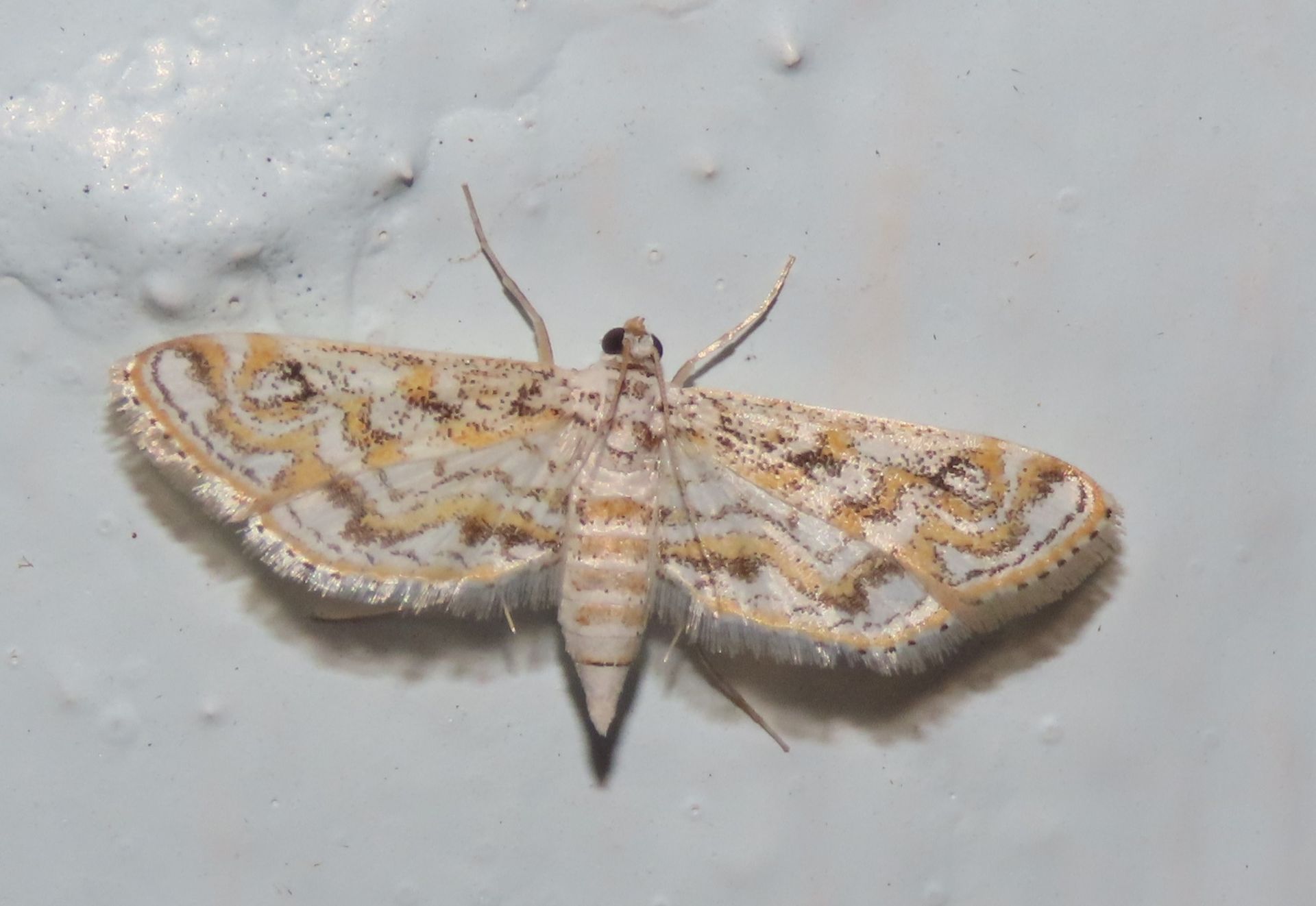

Hydrilla Leafcutter (Parapoynx diminutalis)
This small pearly moth is intertwined with white and golden bands, with dark smudges of varying intensity. The peppering helps separate it from similar crambids with strongly-patterned wings. Recorded June to August, with records in March.
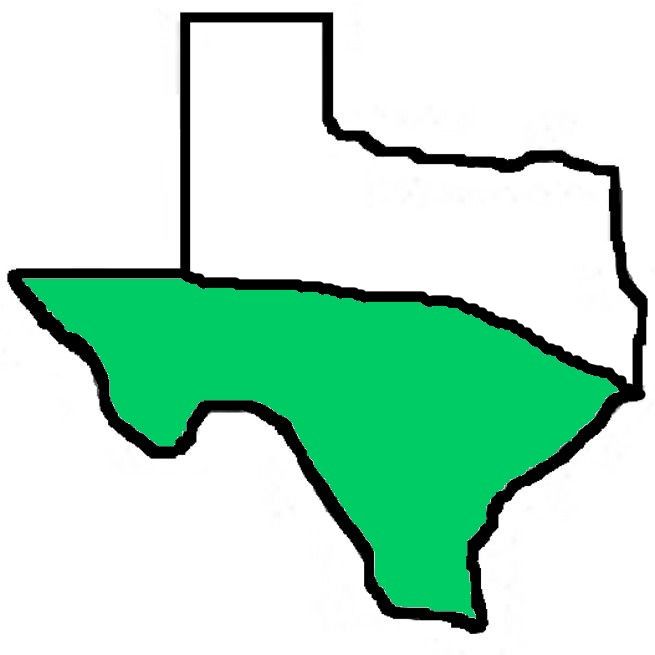
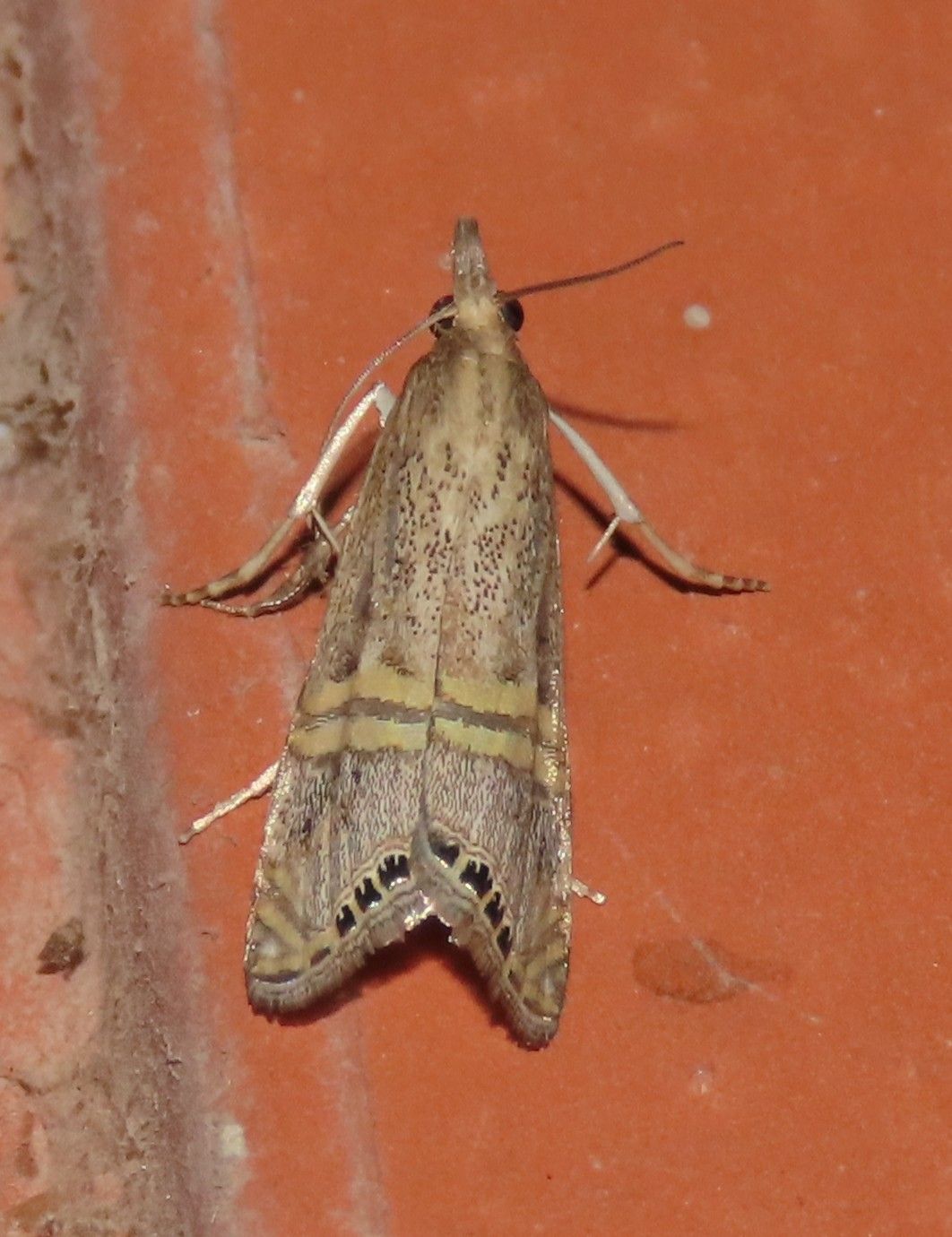
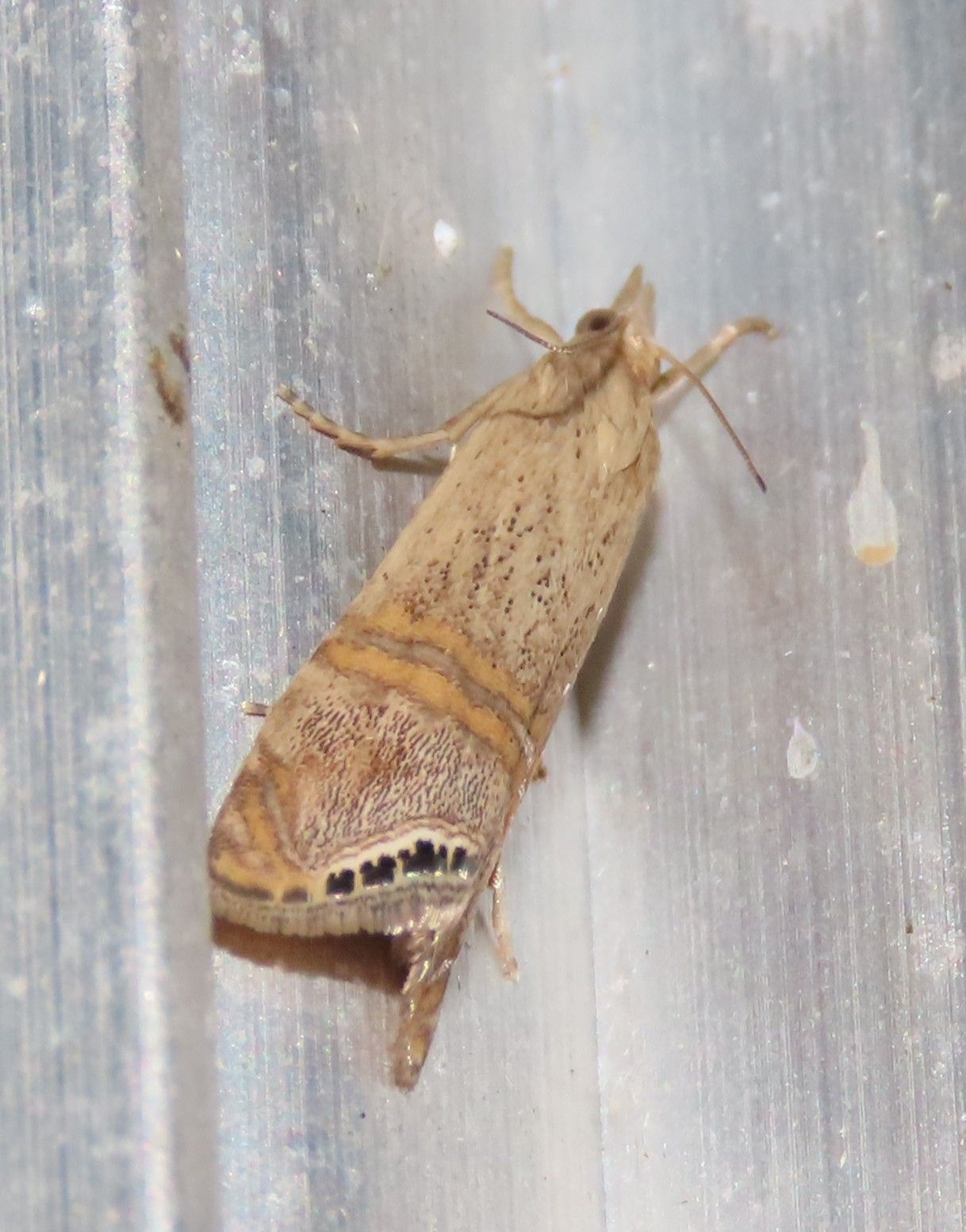
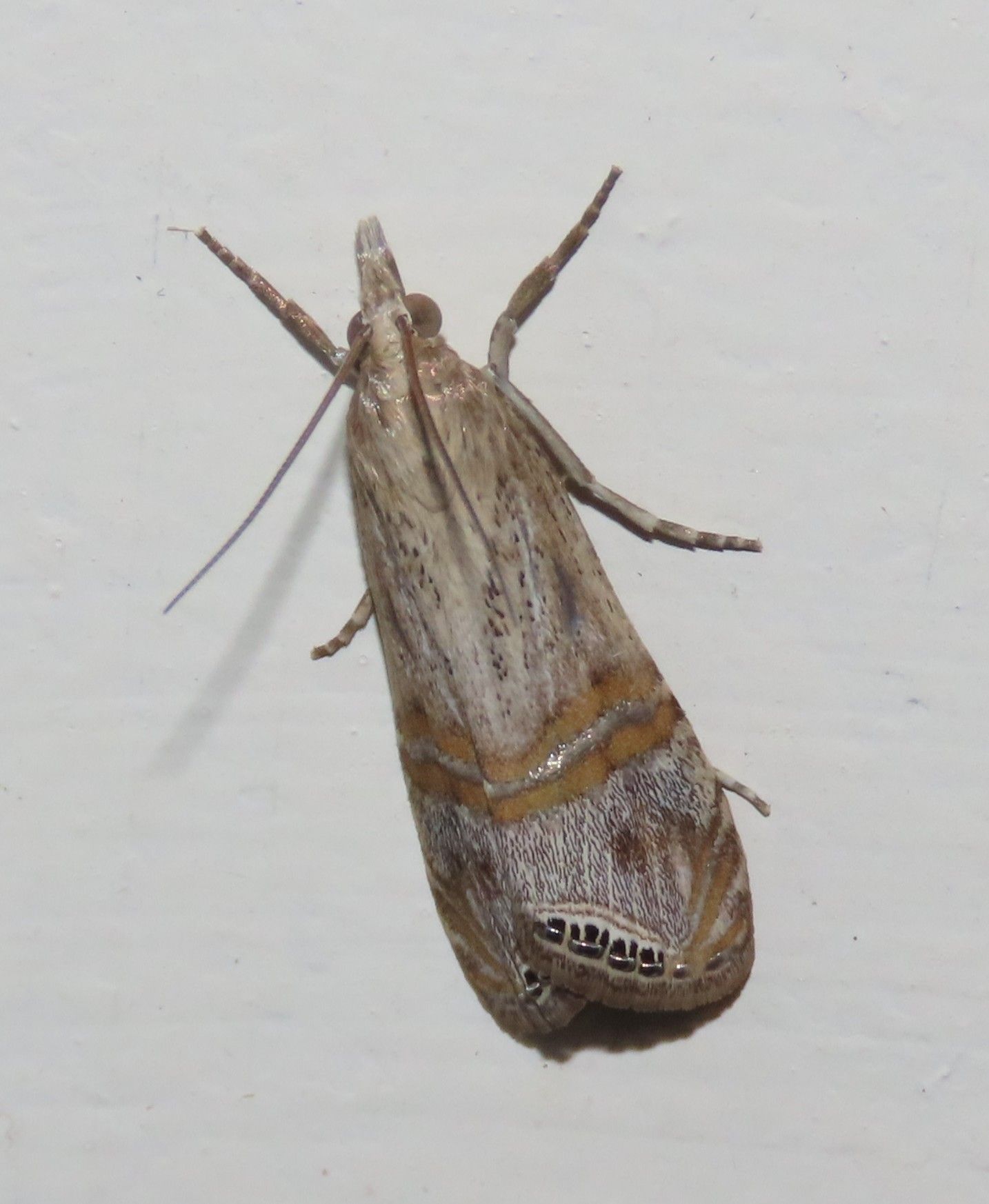
Belted Grass Veneer (Euchromius ocellea)
Peppery straw-colored overall with two obvious golden bands across the median area, and jewel-like black dots along the terminal edge. Recorded July - April.
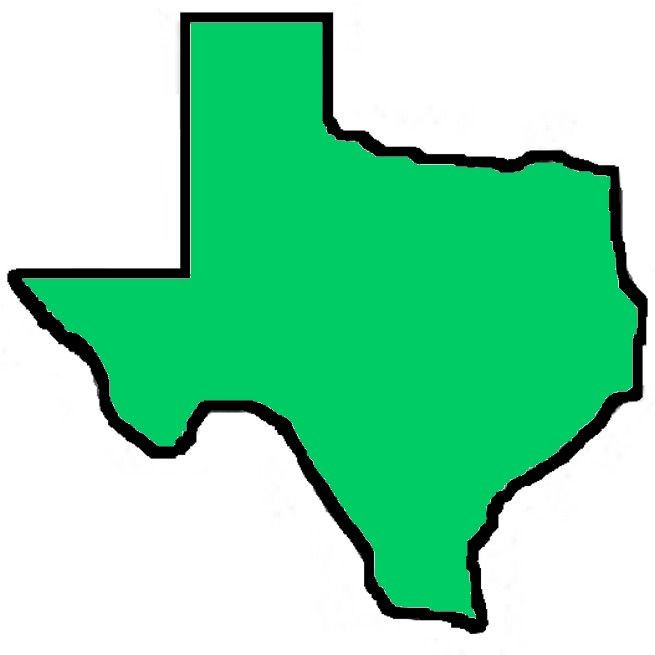

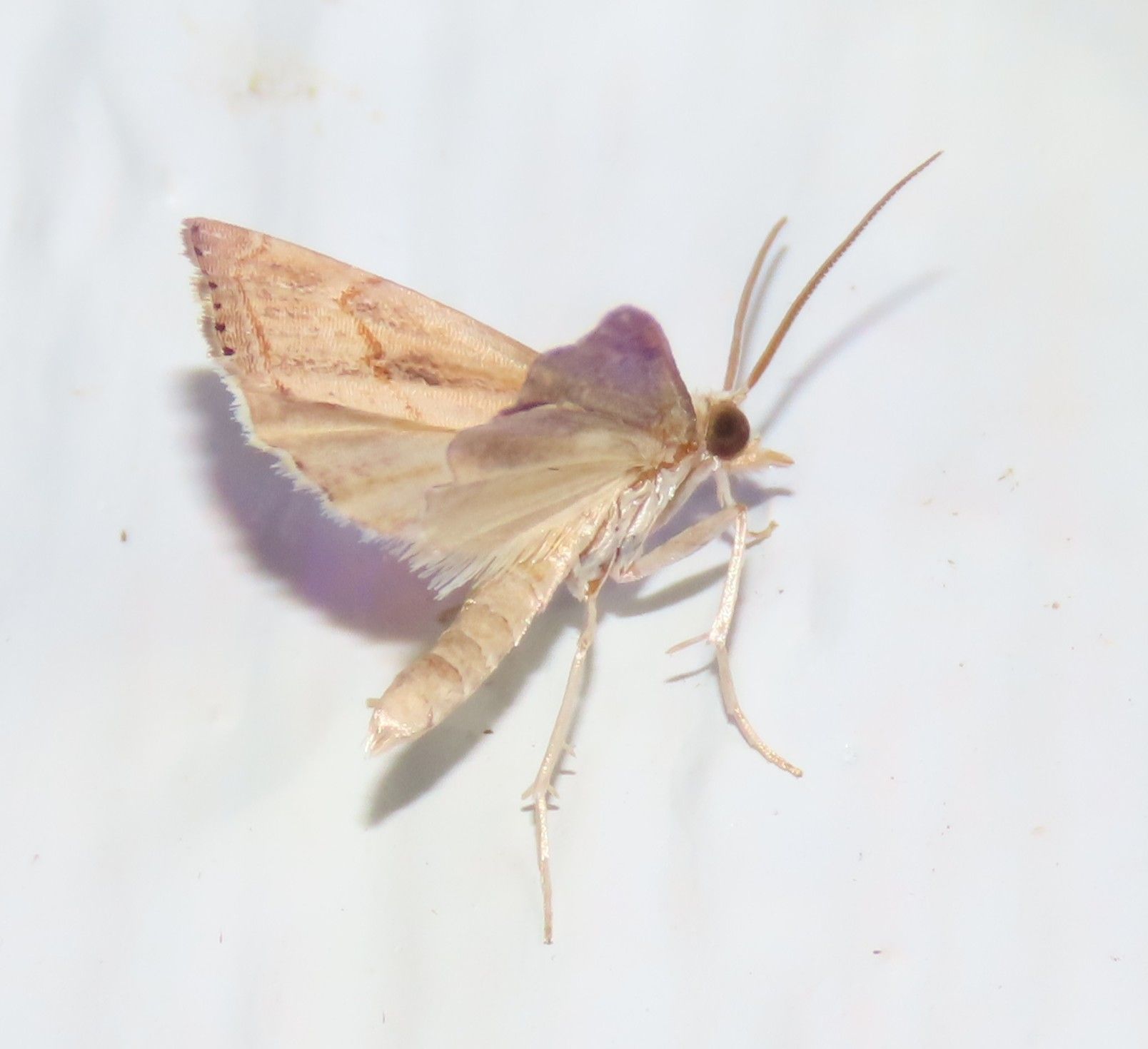

Bluegrass Webworm (Parapediasia teterrellus)
A plain but variable grass veneer with a thin, jagged rusty median band. Sometimes shows darkish smudging ahead of the median band. Recorded July - January.

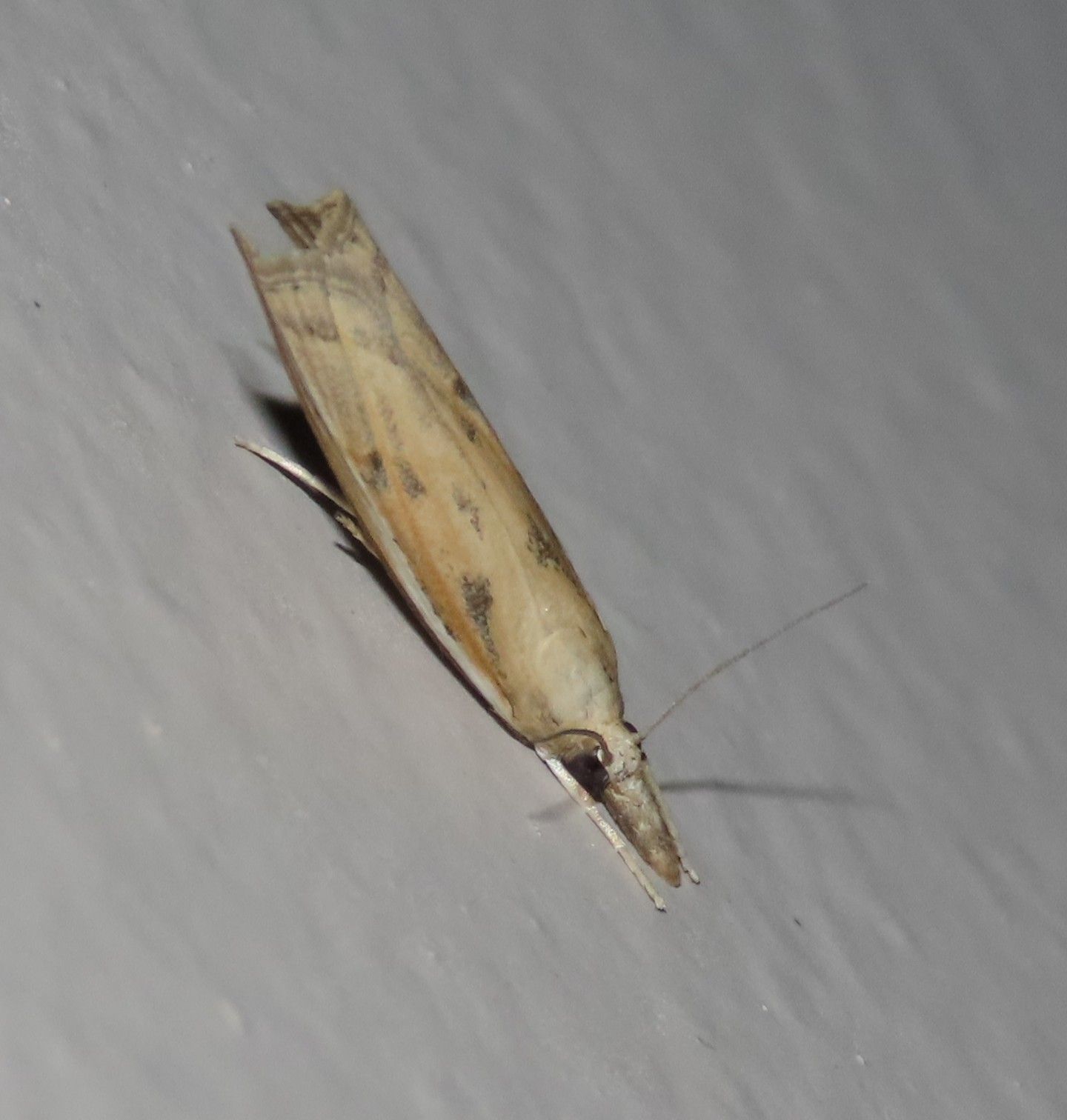
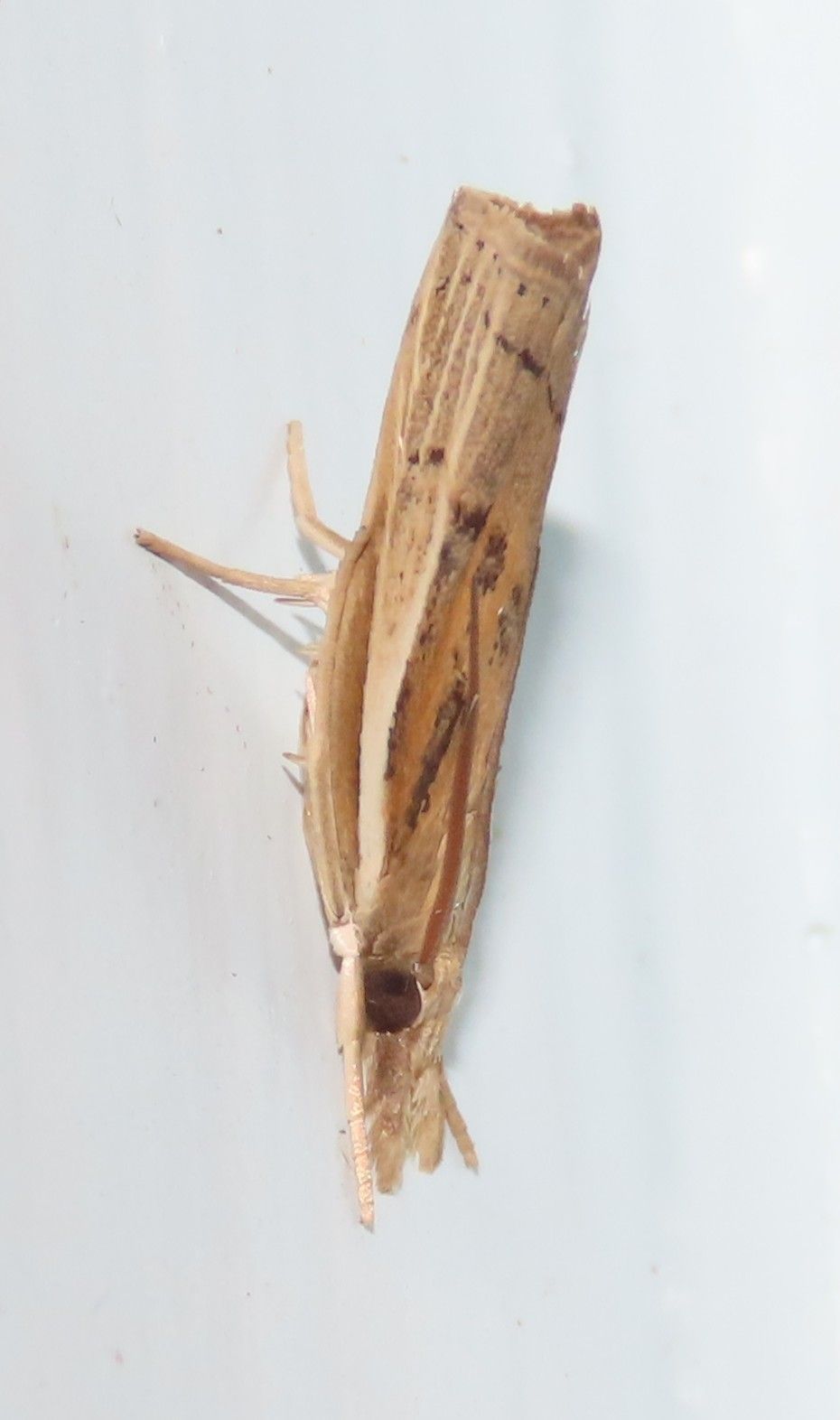
Profane Grass Veneer (Fissicrambus profanellus)
Of all the "white-striped" grass veneers, this species is one of the most likely in the LRGV, although many experts are hesitant to label these anything but "Fissicrambus sp." without dissection or DNA analysis. The typical Profane GV will have a black dot or two where the white stripe fades near the subterminal area. Recorded year-round.
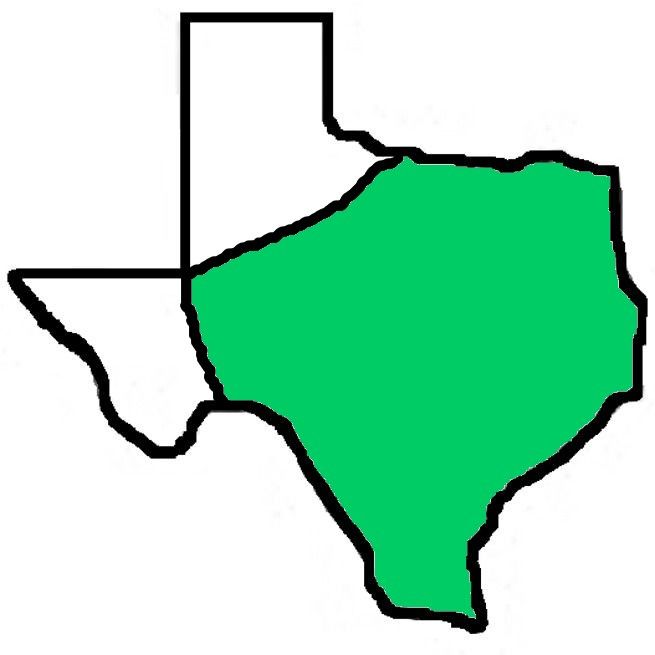

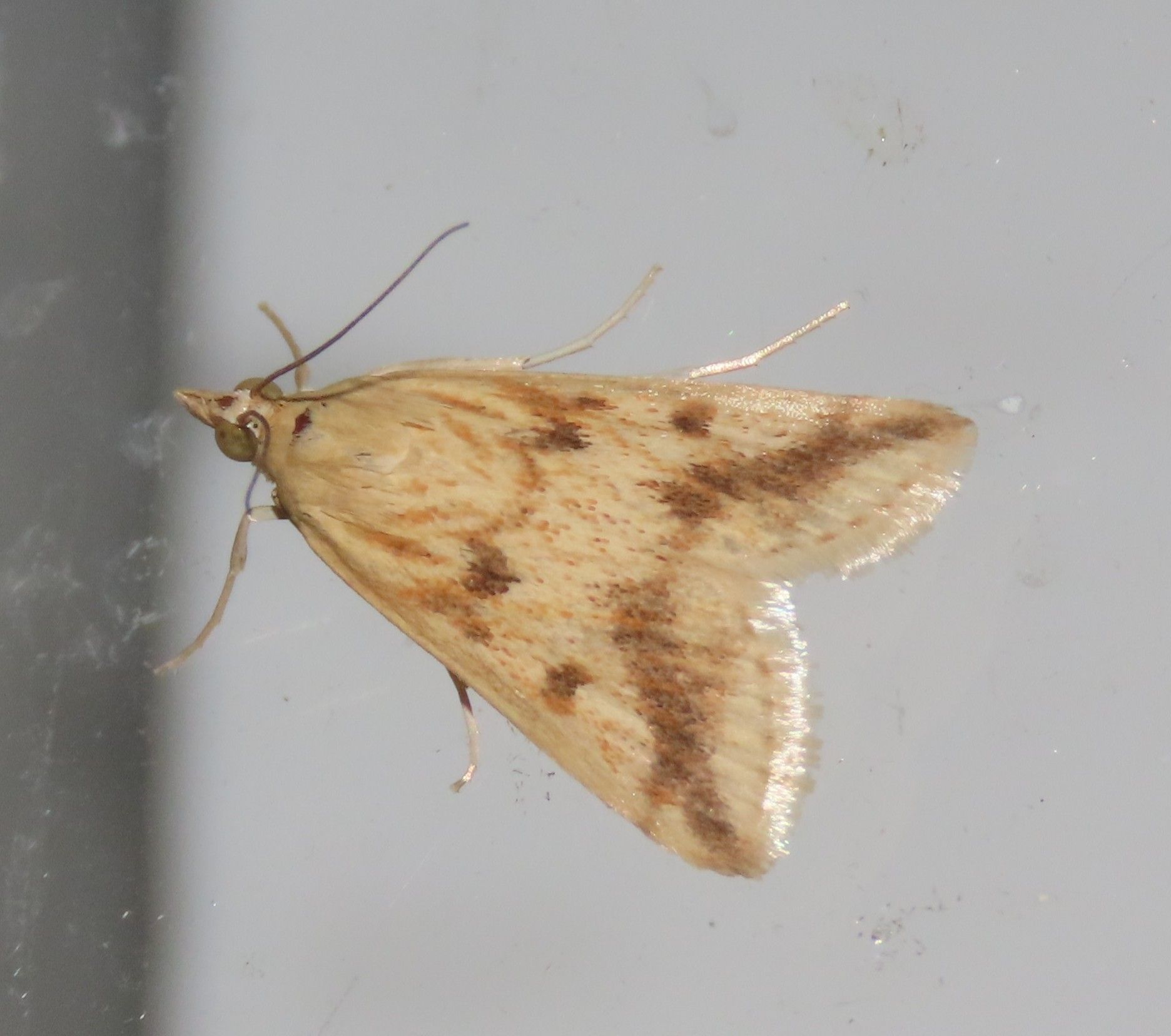
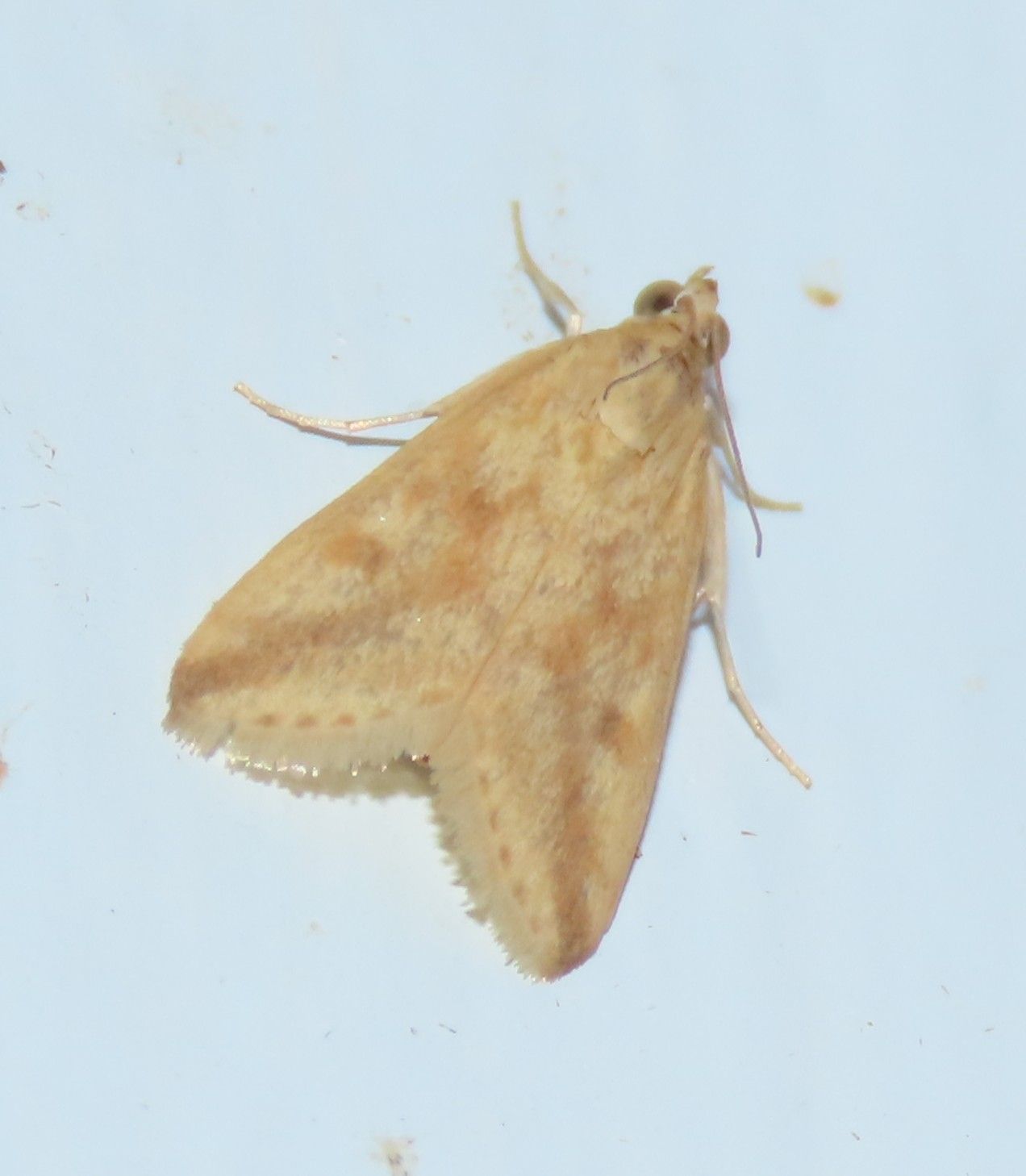
Faithful Achyra (Achyra bifidalis)
A prominent brown line runs from the median area of the forewing down to the apex, where it splits. Four additional prominent brown spots on the forewing can sometimes look like bands across the wings. Even faded individuals (right) show this basic pattern. Recorded August - December, with some records in March and April.
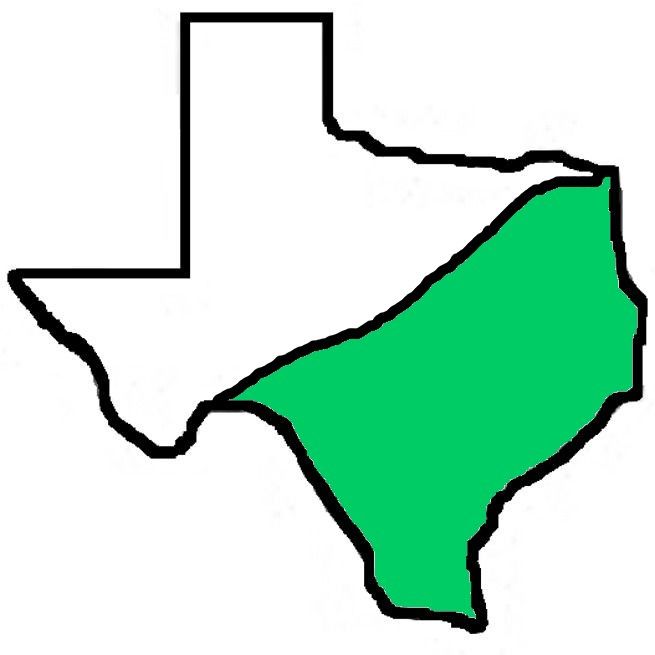
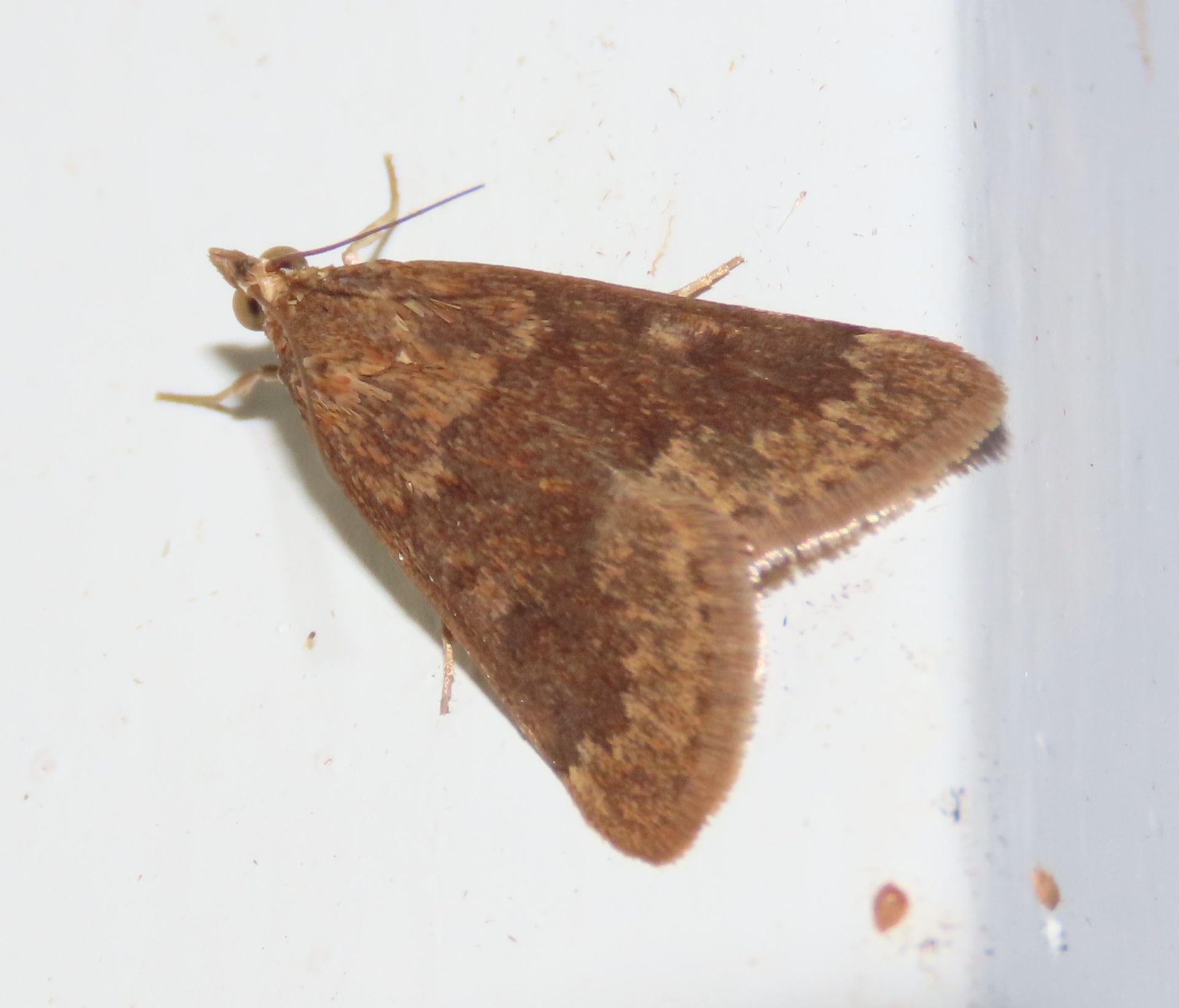
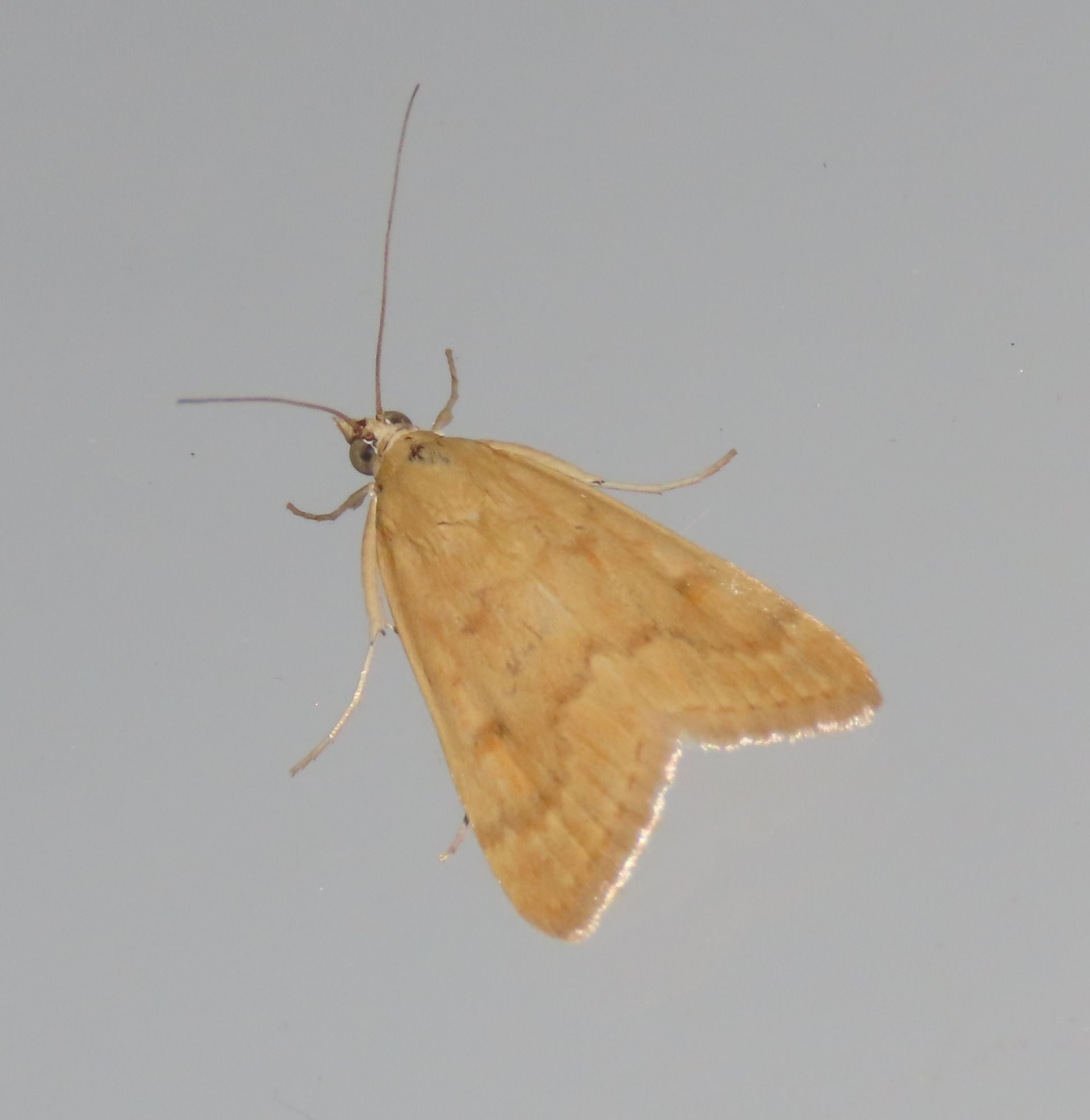
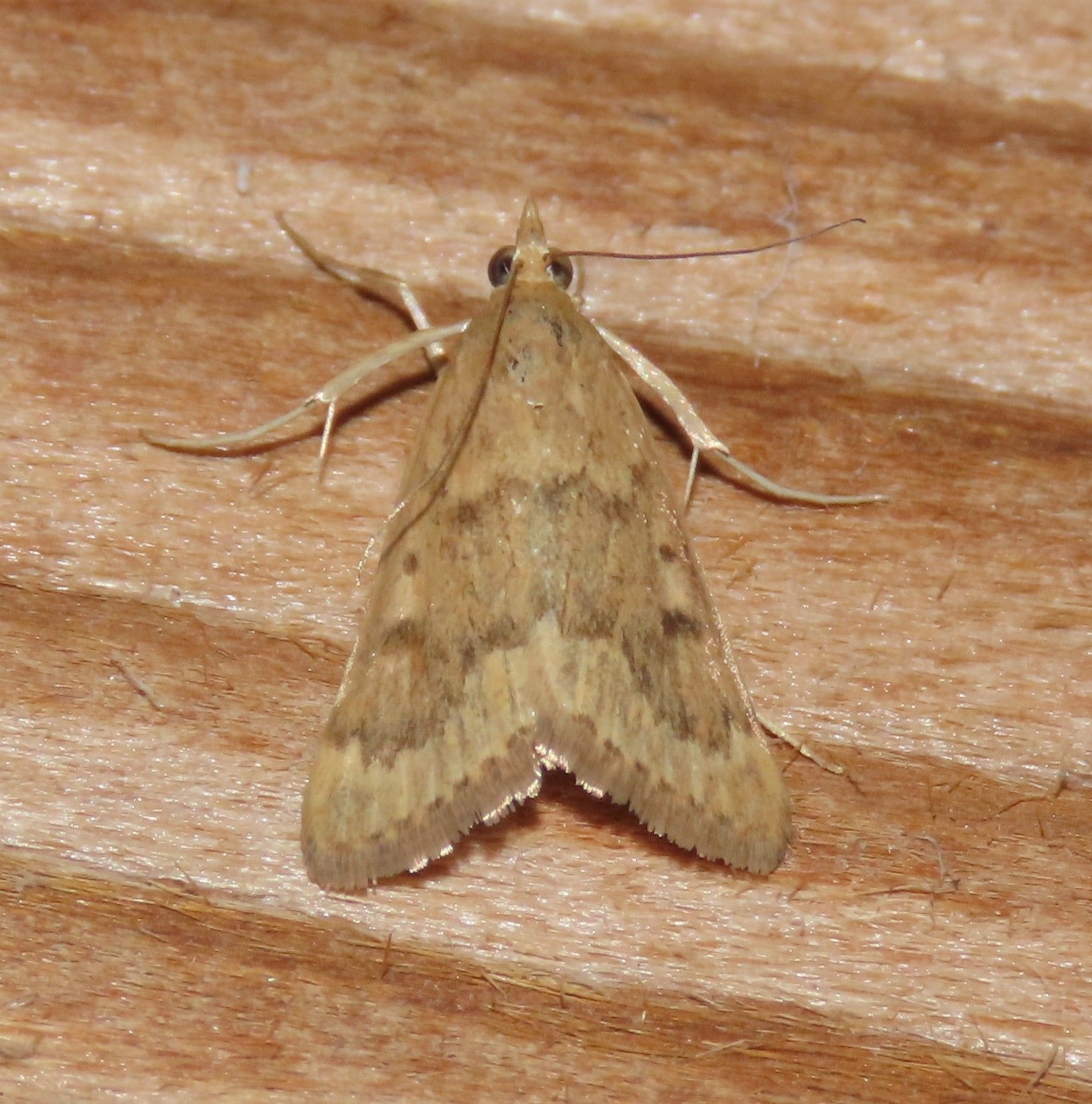
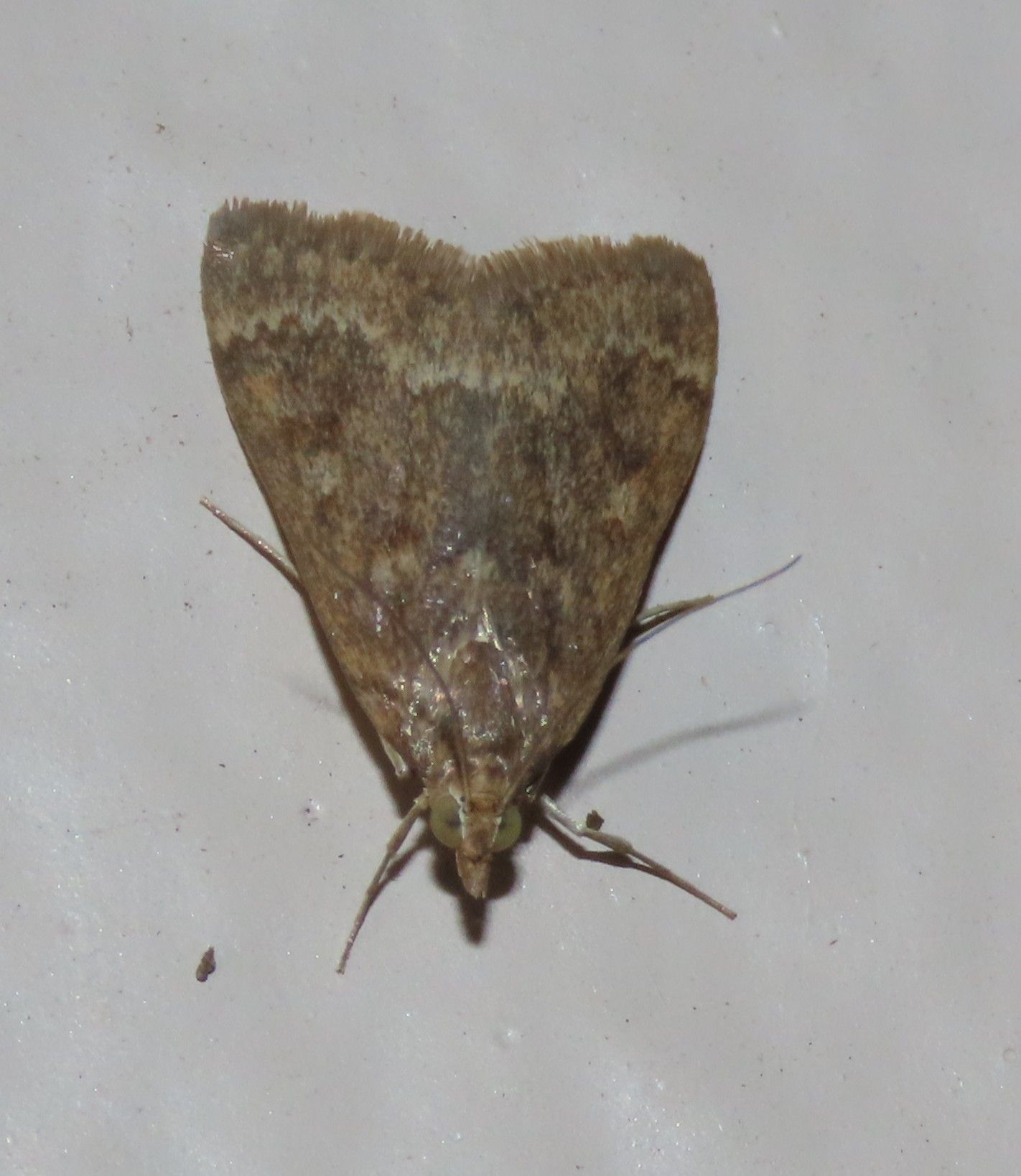
Garden Webworm (Achyra rantalis)
Extremely variable; usually shows a paler subterminal band and a dark reniform spot. In most individuals a pale patch connecting the reniform and orbicular spots is visible. Recorded year-round.

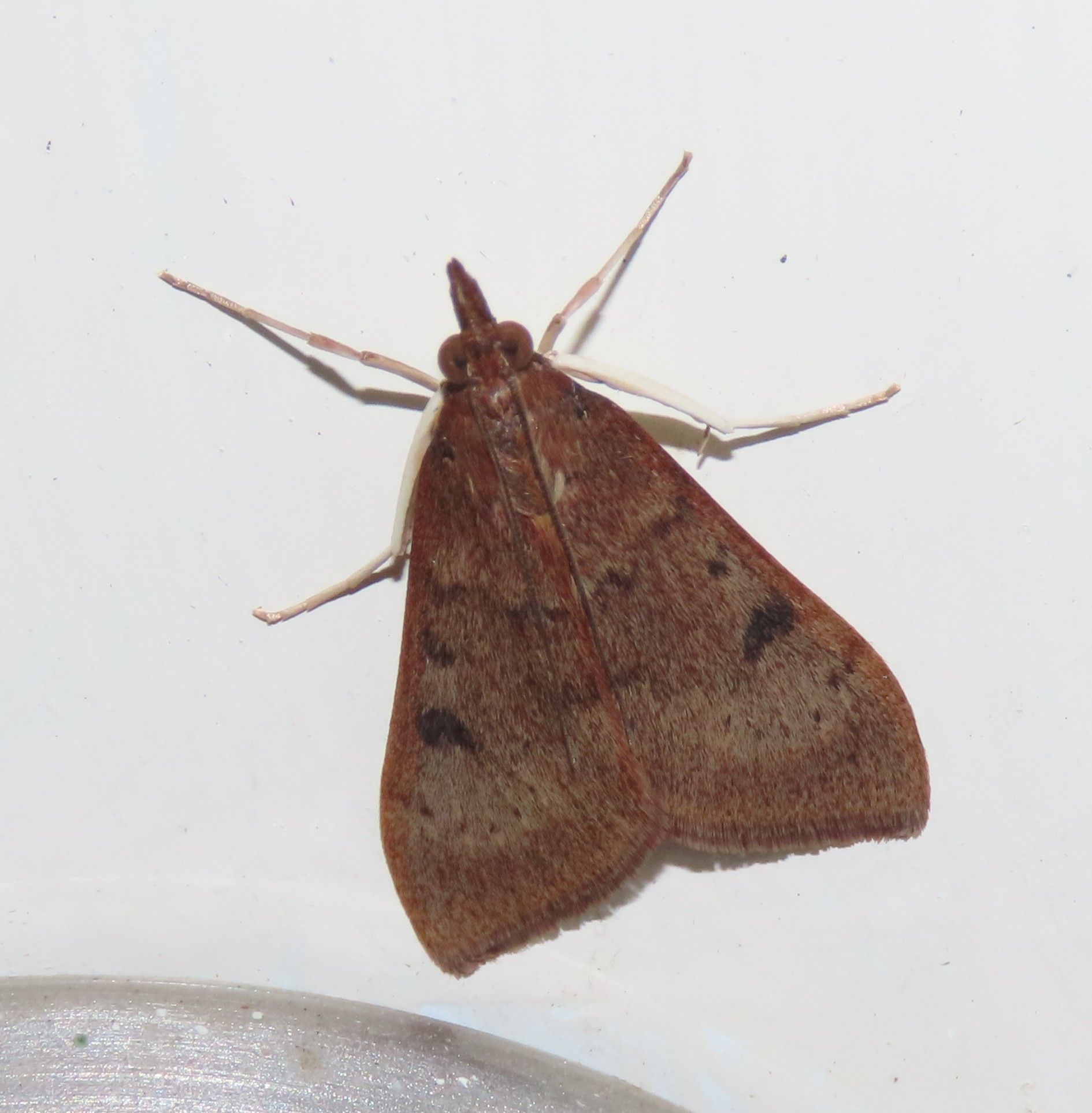
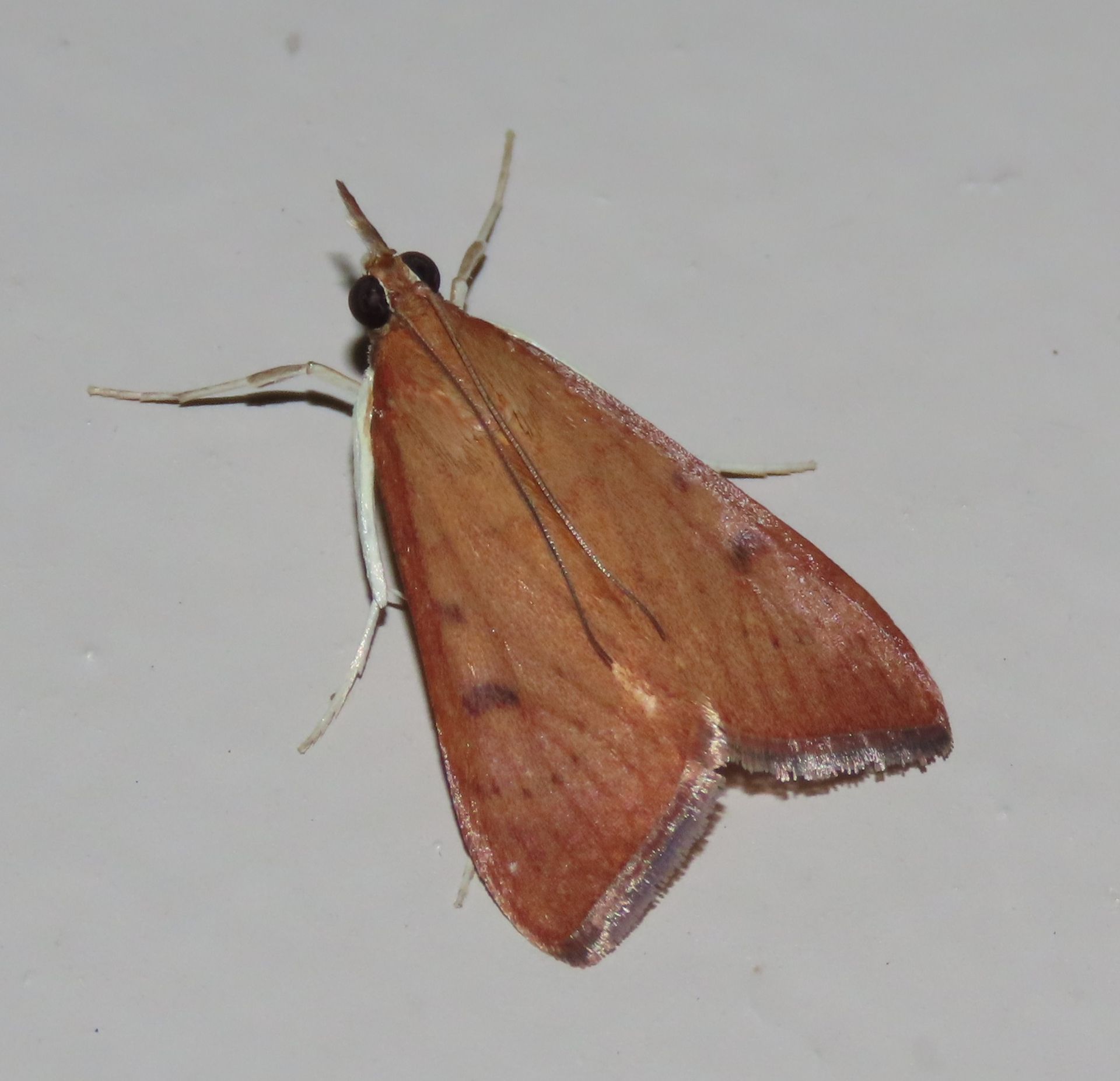

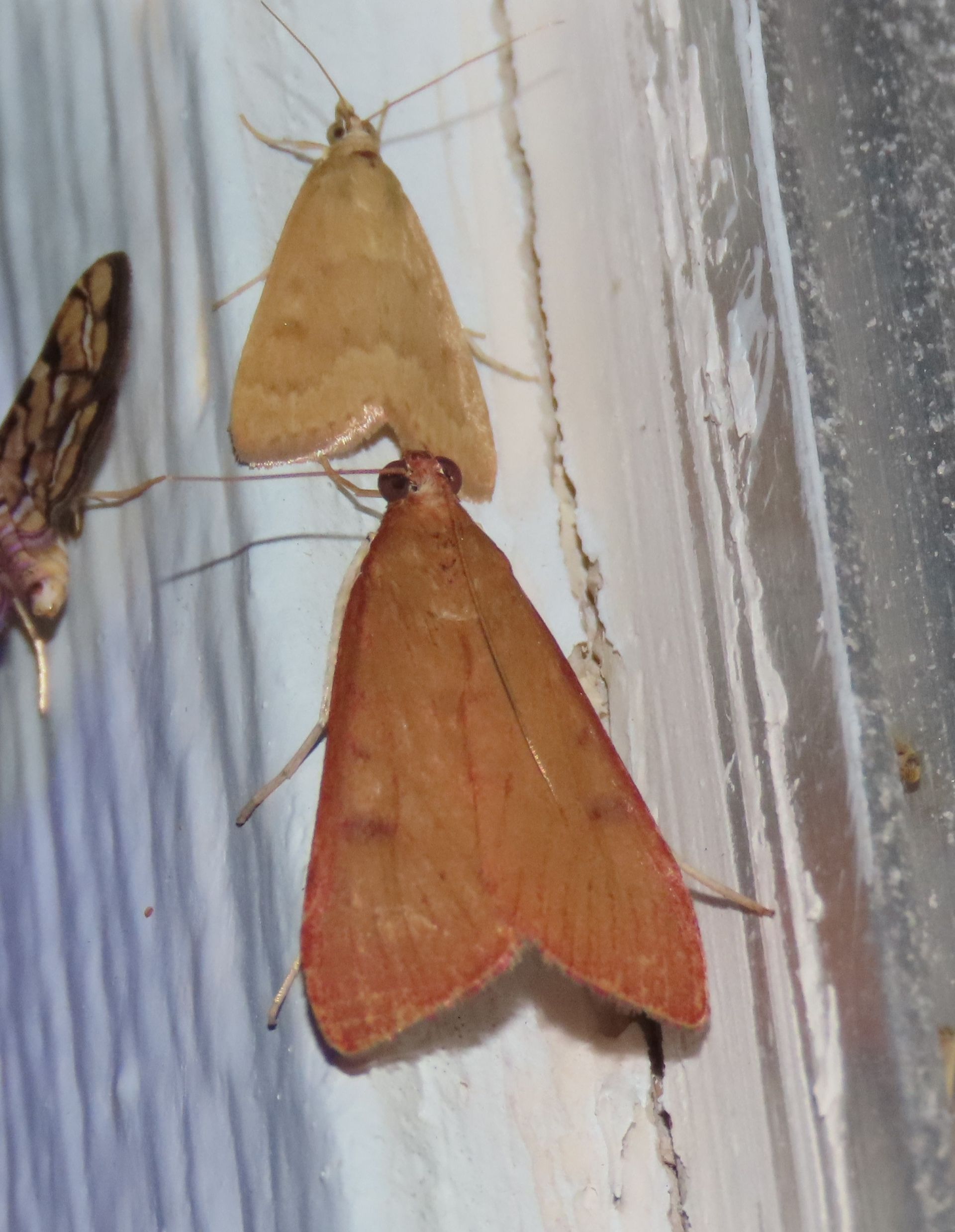
Genista Broom Moth (Uresiphita reversalis)
Similar to the smaller Garden Webworm (shown with the Genista in the far right image), but with a dotted subterminal line as opposed to a wavy one, and a long, pointed "snout". The dark reniform spot is bean-shaped, and the orange hindwings are diagnostic when visible. Recorded April-May and July-February.

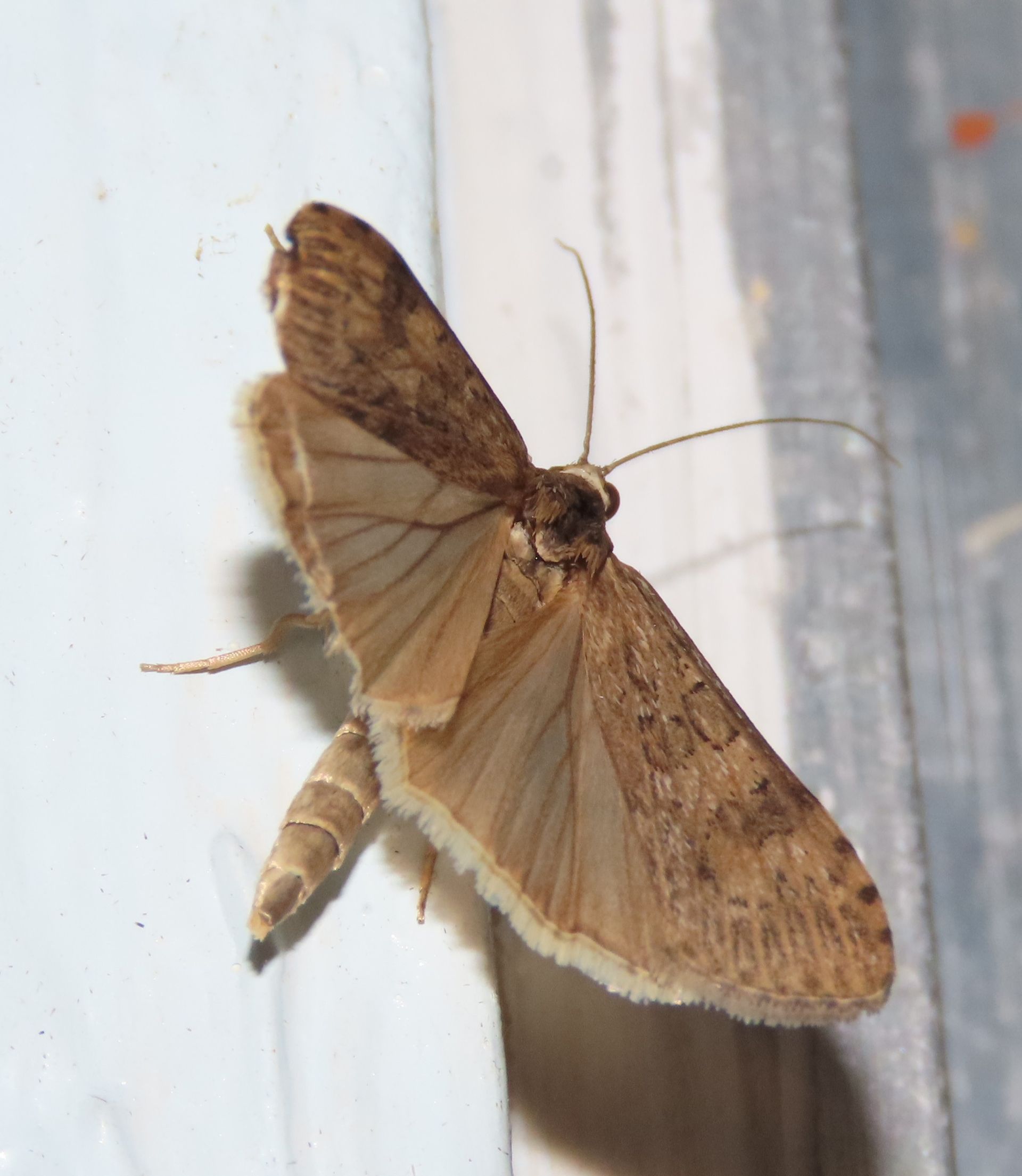
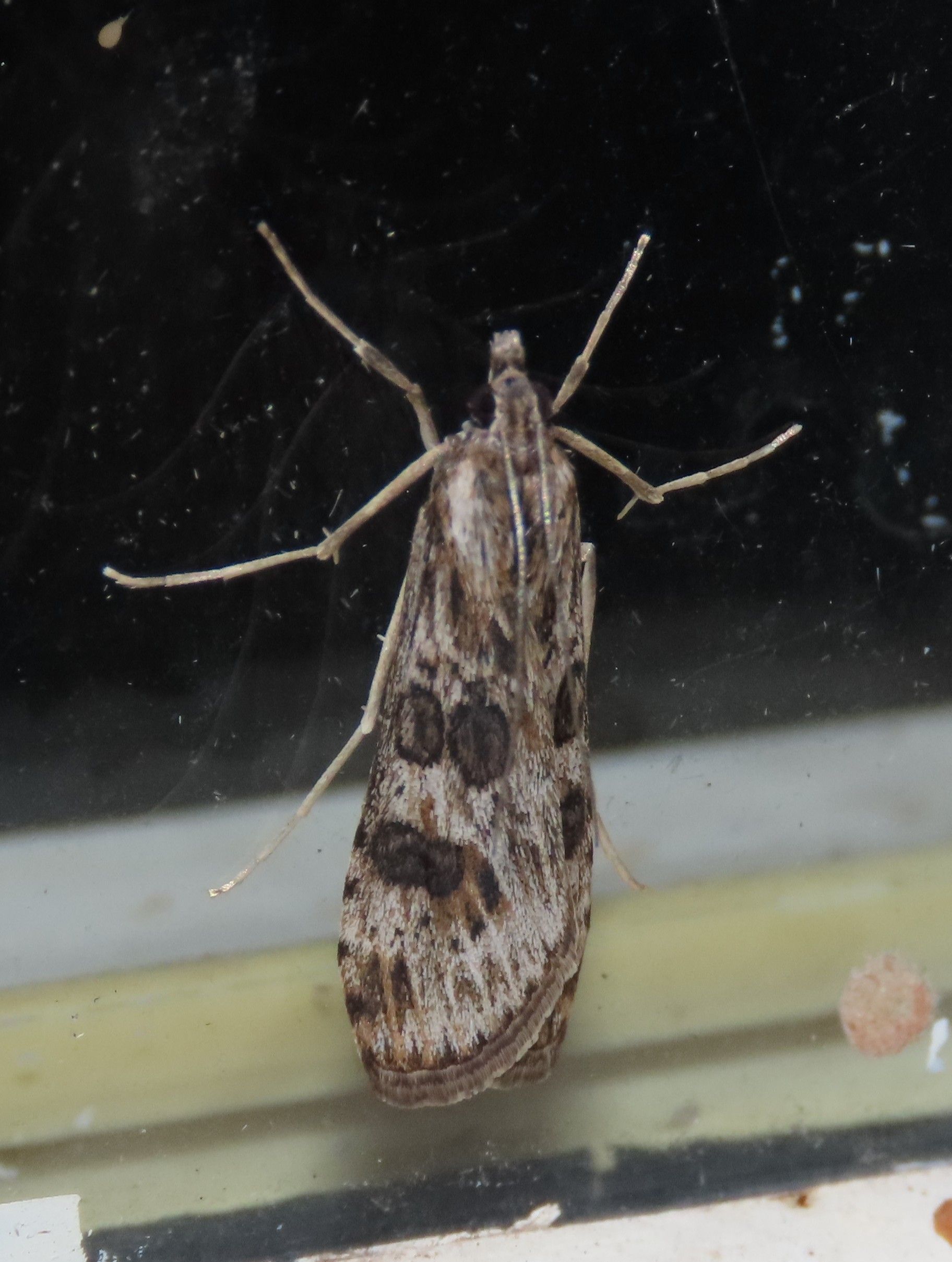
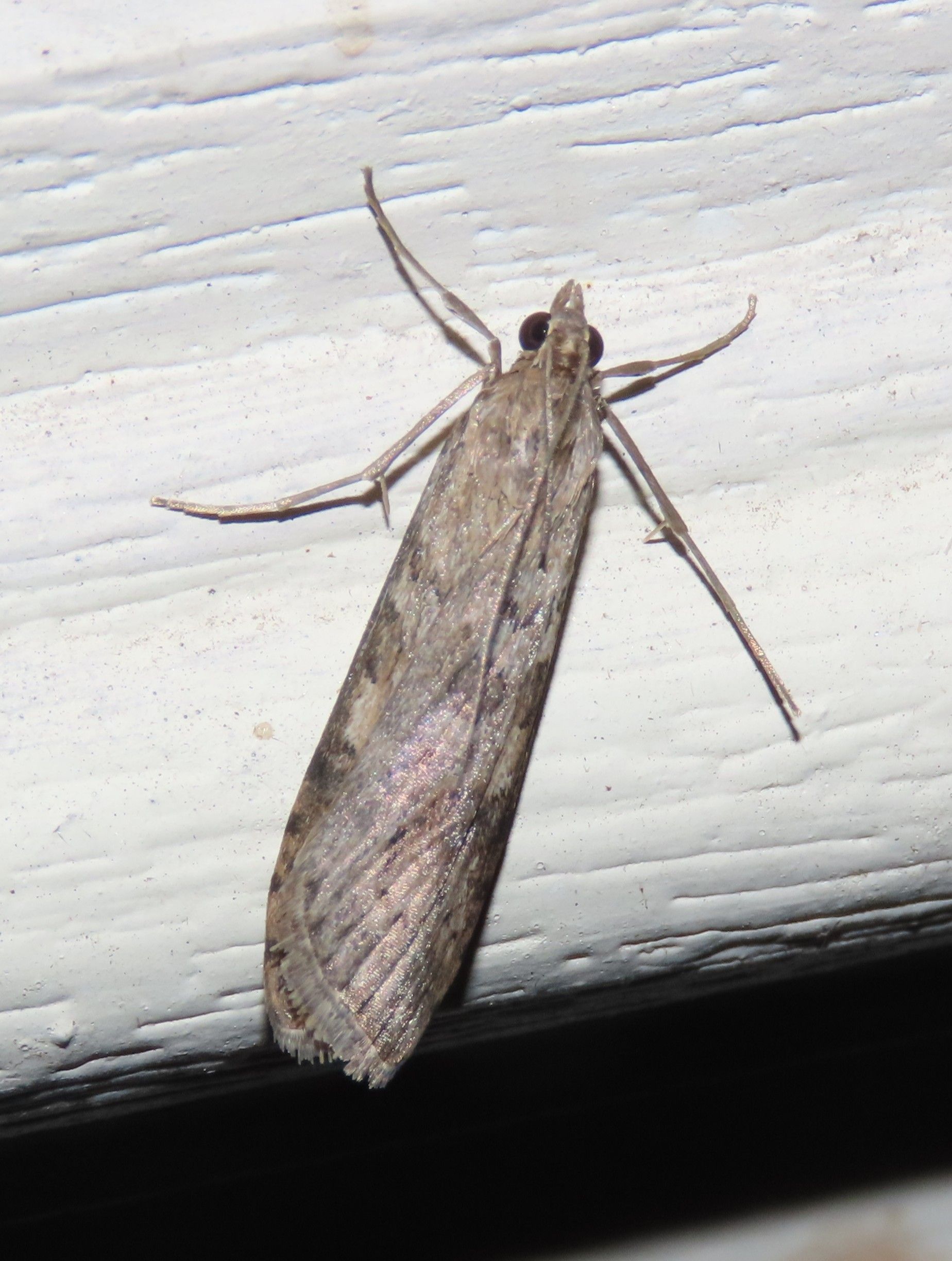
Lucerne Moth (Nomophila nearctica)
A long and lanky moth with pronounced reniform, claviform, and orbicular spots that form somewhat of a band across the wings. Even the most worn individuals will show the four small black dots along the lower edge of the forewing. Recorded October - February.

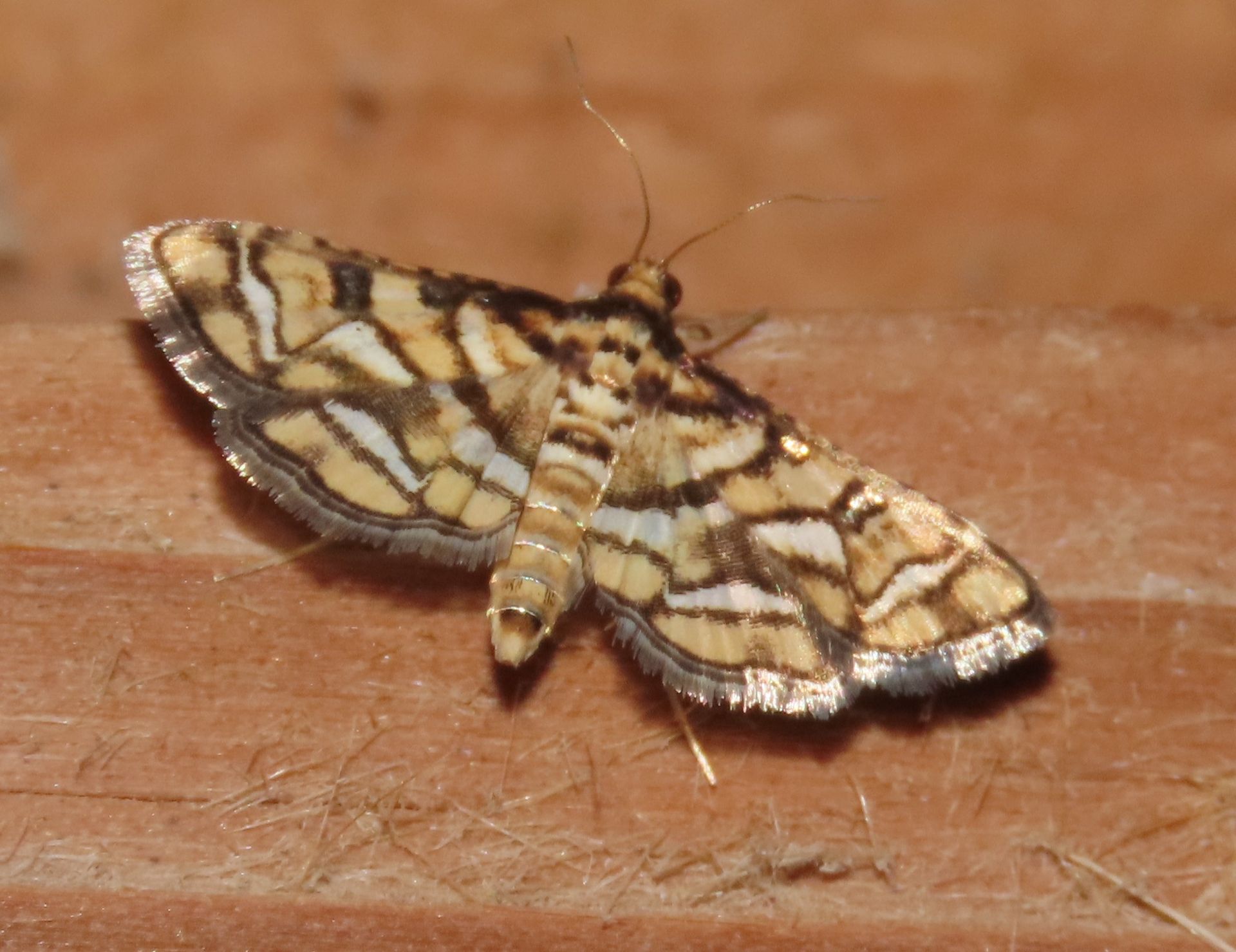
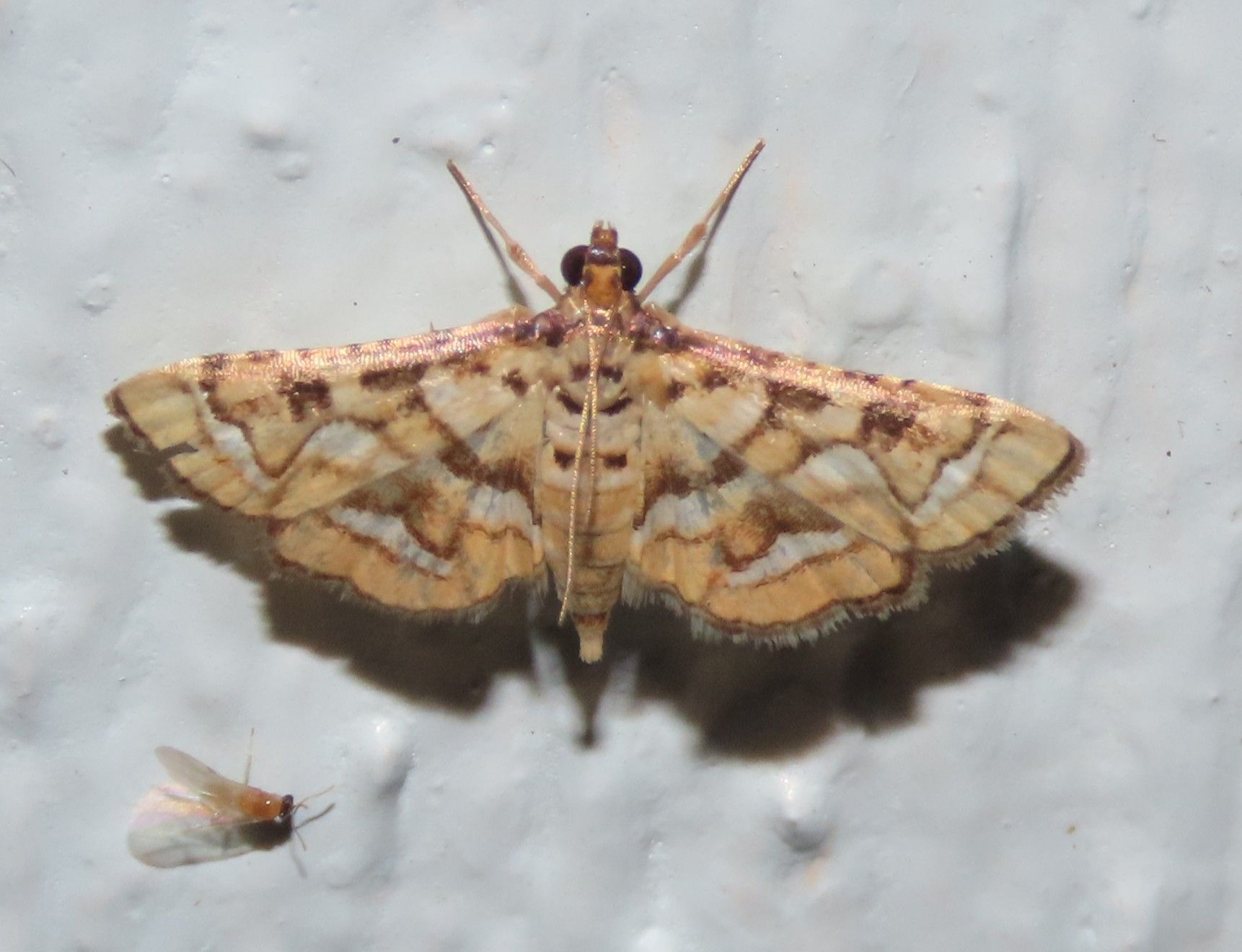
Magician Moth (Hileithia magualis)
This little golden moth is boldly marked with dark brown lines and white bands outlined in dark brown. Look for the dark brown "shoulders" and costa spots to help separate it from similar species found in the LRGV. Recorded March - November, most common in July.
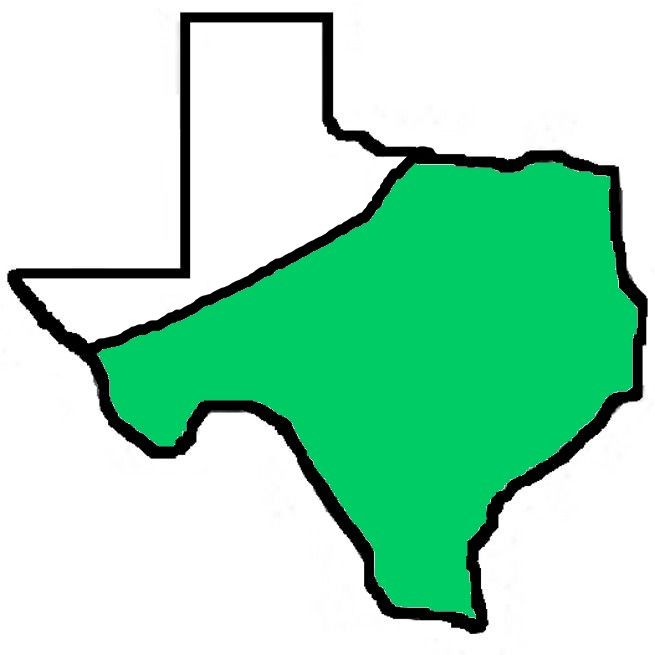


Dusky Herpetogramma (Herpetogramma phaeopteralis)
This dull brown moth has a wavy, dark PM line that swings up towards the solid reniform spot (the "upswing" can be hard to see, giving the bug a "three-banded" look like the one on the right). The thin white bands on the abdomen are good ID clues as well. Recorded March to May and July to November, being particularly common in October and November.
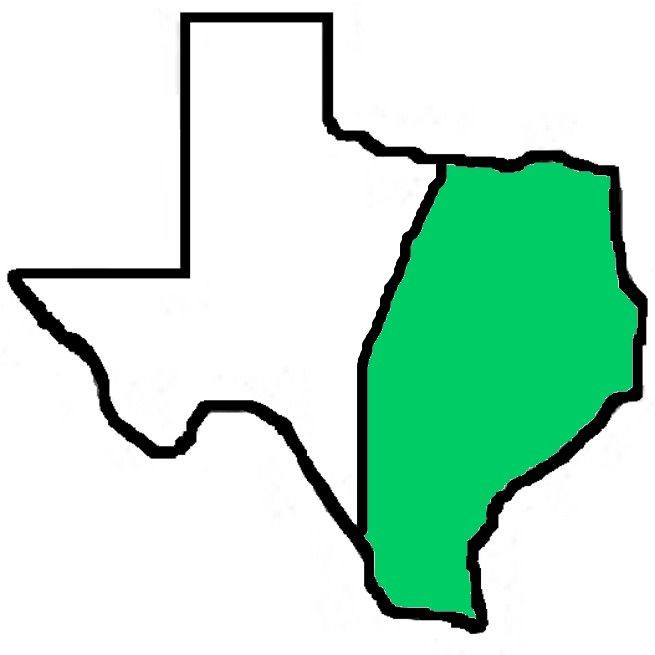
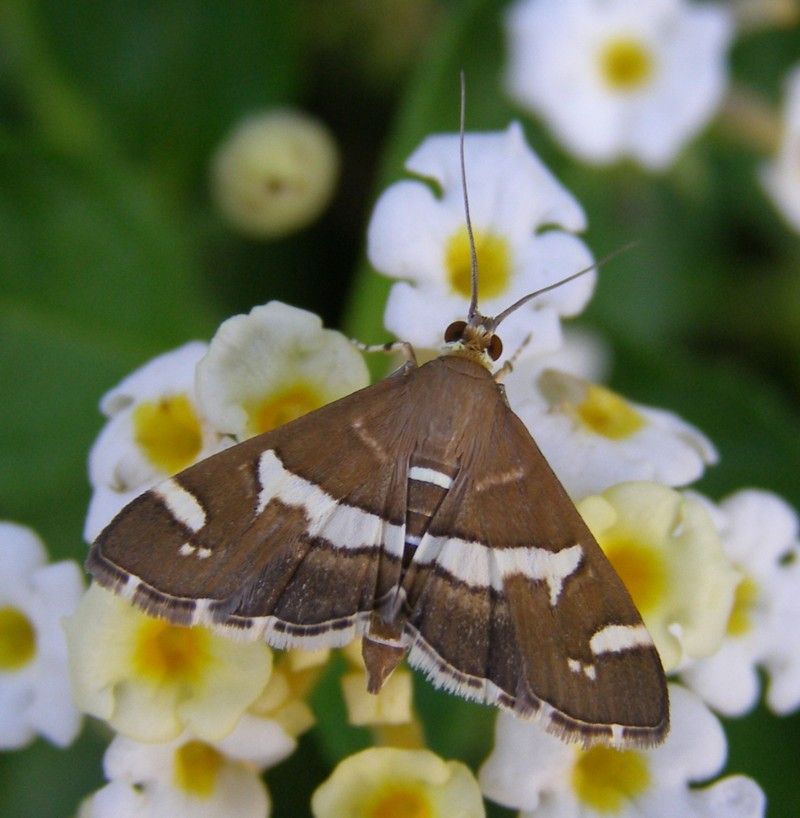
Hawaiian Beet Webworm (Spoladea recurvalis)
Similar to the Spotted Beet Webworm (but not even in the same genus), this bug has a very broad white median band. Very commonly seen during the day feeding with butterflies and other nectar-loving bugs. Recorded June - February.

